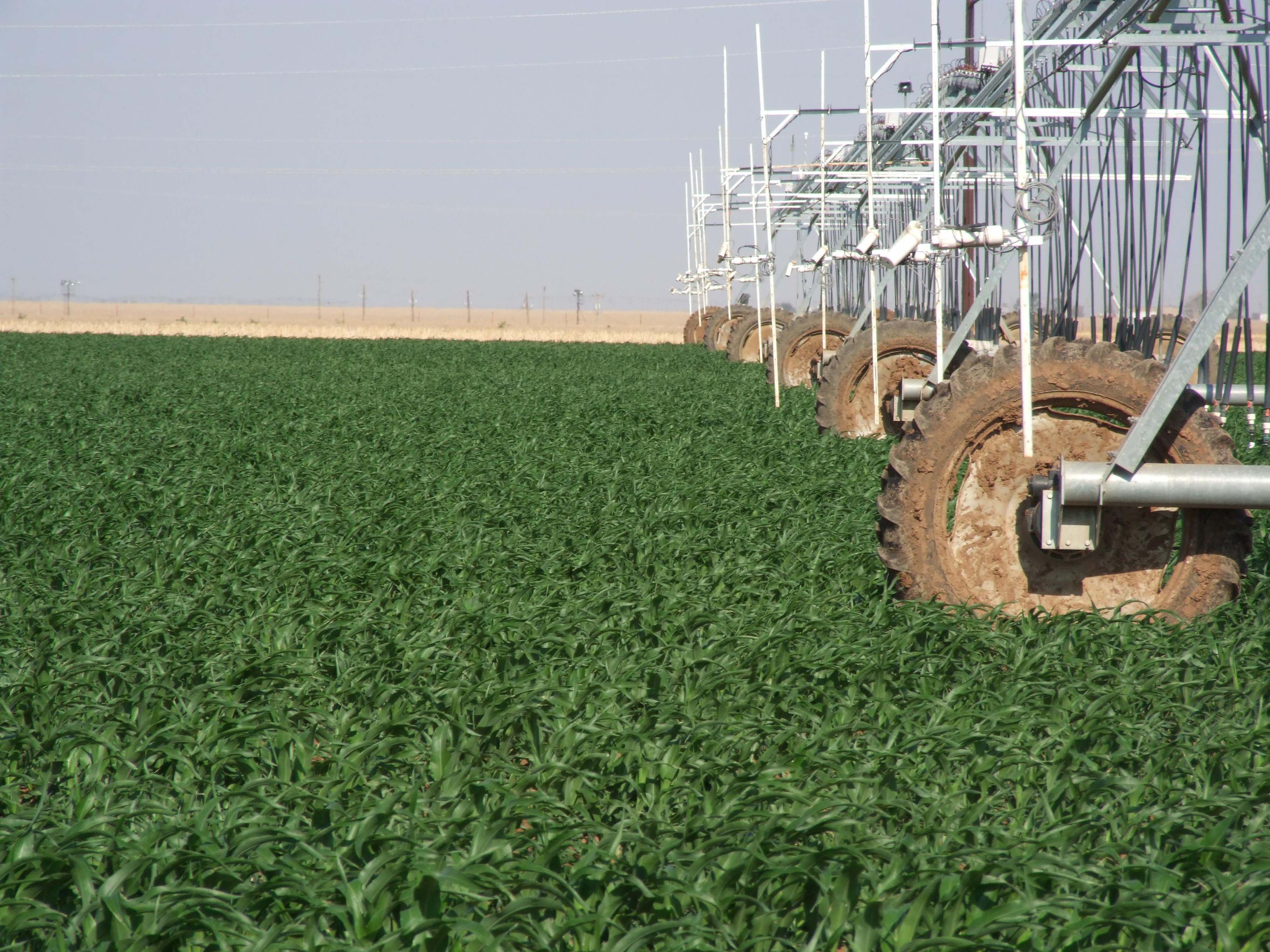By Jessica Domel
Field Editor
Texas farmers will soon have another tool in the fight to conserve and preserve the state’s most natural resource, water, while still maintaining good yields.
Developed by Dr. Susan O’Shaughnessy, a research agricultural engineer for the U.S. Department of Agriculture Research Service (USDA-ARS) and colleagues, the new system includes two types of sensors.
The first are plant sensors, or infrared thermometers, that measure the plant’s temperature. These are hung off a center pivot laterally so they can measure the canopy temperature and send back information as to whether or not an area needs to be watered.
The second are soil-water sensors. Together, they allow researchers like O’Shaughnessy to manage the variable rate center pivot system.
The system allows farmers to digitize their crop’s status so they can see which parts of a field are more stressed than others.
“We can do that with temperature,” O’Shaughnessy, who is based out of Bushland, said. “When the plant is water-stressed, its stomates will close and canopy temperature elevates.”
The sensors will pick up that rise in temperature and provide farmers with a map of the field showing which areas have higher temperatures.
“The farmer can ideally walk those areas to see what’s specifically going on,” O’Shaughnessy said. “Maybe a nozzle is plugged in the pivot system. Maybe there’s a pest infestation.”
The system, which O’Shaughnessy has been working on since 2007, is designed to also improve crop water use efficiency.
“We’re looking to save water by not over-watering, but still producing high yields,” O’Shaughnessy said. “This will give the farmer some hints as to are they over- or under-irrigating.”
The technical information on the sensors and the system has been provided to a third party company who commercialized them.
O’Shaughnessy is also working with a colleague who is in the process of developing a soil-water sensor that can be put into the ground to measure soil-water content at different depths and then relay that information back wirelessly.
“We’re automating this mainly to provide a spatial map to present to a farmer and then some decision support,” O’Shaughnessy said.
In a few years, it’s possible that O’Shaughnessy’s research will be available to help farmers and plant breeders across the state.
“We’re trying to make it simple,” O’Shaughnessy said. “That’s why the software integration is so important.”

